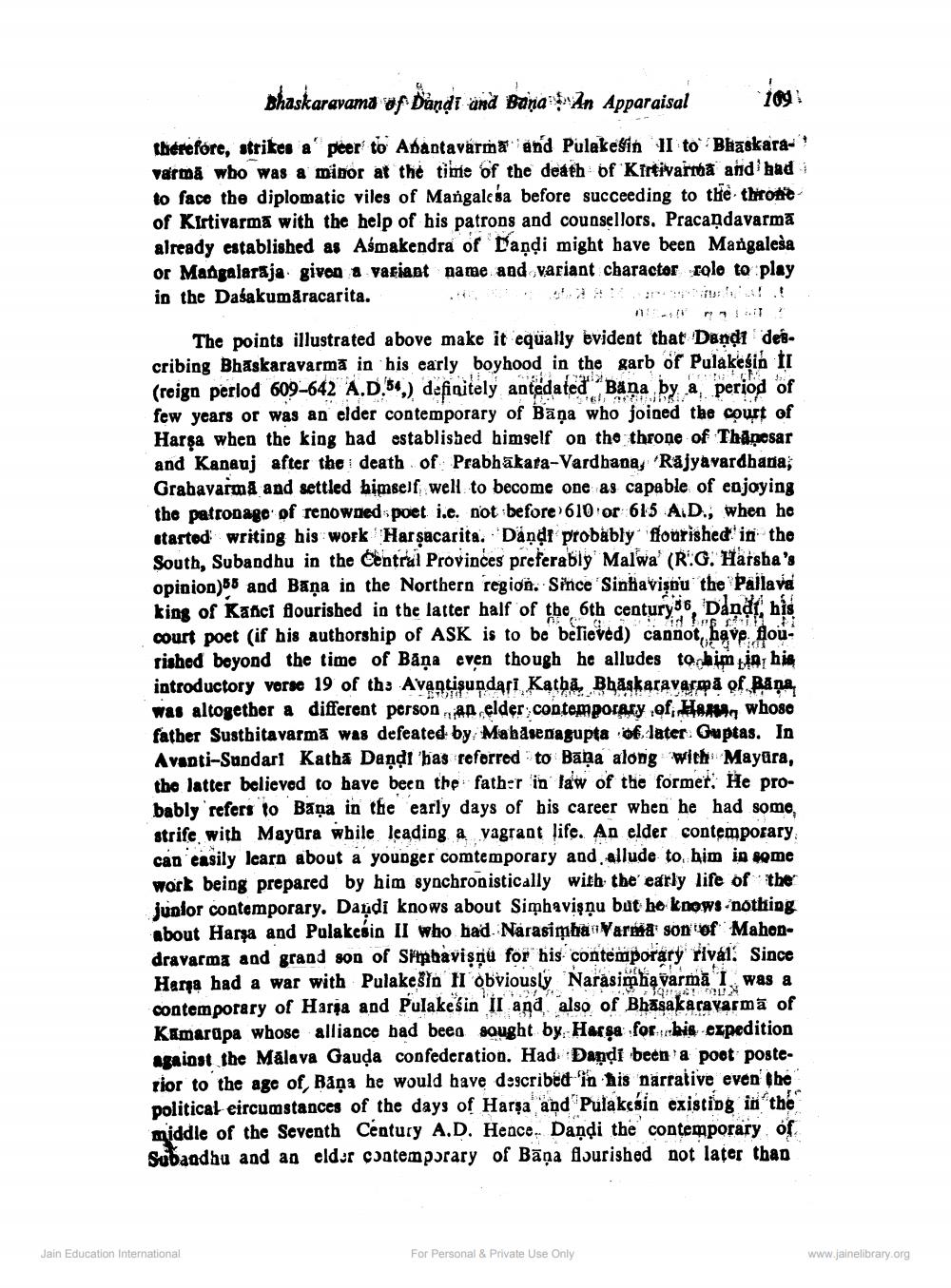________________
Bhaskaravama of Bandi and Bana - An Apparaisal
10g
therefore, strikes a' peer to Adaptavarma and Pulakesin II to Bhaskara-! varma who was a minor at the time of the death of Kirtivarma and had to face the diplomatic viles of Mangaleba before succeeding to the throne of Kirtivarma with the help of his patrons and counsellors, Pracaņdavarmā already established as Asmakendra of Paņdi might have been Mangaleša or Mangalaraja given a variant name and variant charactor role to play in the Dasakumaracarita.
. . !
!!
The points illustrated above make it equally bvident that Dandi describing Bhaskaravarma in his early boyhood in the garb of Pulakesin fr (reign perlod 609-642 A.D.54) definitely antedated Båņa by a period of few years or was an elder contemporary of Bāņa who joined the court of Harsa when the king had established himself on the throne of Thåpesar and Kananj after the death of Prabhakata-Vardhana, Rajyavardhana; Grabayarmà and settled himself well to become one as capable of enjoying the patronage of renowned poet i.e. not before 610 or 615 AD., when he started writing his work Harşacarita. Daņdi probably flourished in the South, Subandhu in the Central Provinces preferably Malwa (R.G. Harsha's opinion)55 and Baņa in the Northern region. Since Sinhavişnu the Pallava king of Kanci flourished in the latter half of the 6th century56, Daņķi, his
ide
? court poet (if his authorship of ASK is to be believed) cannot have flourished beyond the time of Baņa even though he alludes to claim in his introductory verse 19 of th: Avagtisundari Katha, Bhaskaravarma of Bana, was altogether a different person, an elder contemporary of Ham, whoso father Sustbitavarma was defeated by Mabdrenagupta of later Guptas. In Avanti-Sundari Katha Daņdi 'has referred to Baņa along with Mayūra, the latter believed to have been the father in law of the former, He probably refers to Baņa in the early days of his career when he had some strife with Mayūra while leading a vagrant life. An elder contemporary can easily learn about a younger comtemporary and allude to him in some work being prepared by him synchronistically with the early life of the junior contemporary. Daudi knows about Simhavişņu but he knows nothing about Harşa and Pulakcsin II who bad Narasimha Warmason of Mahendravarma and grand son of Simbavişņu for his contemporary rival. Since Hana had a war with Pulakešin II obviously Narasimhavarma 1. was a contemporary of Harja and Pulakesin II and also of Bhāsakacavarmā of Kamarapa whose alliance had been sought by Harga for his expedition against the Mälava Gauda confederation. Had Daņdi been a poot posterior to the age of, Raņa he would have described in his narrative even the political eircumstances of the days of Harșa and Pulakcsin existing in the middle of the Seventh Century A.D. Hence. Daņại the contemporary of Subaadhu and an eldur contemporary of Bāņa flourished not later than
W
TH!
!
Jain Education International
For Personal & Private Use Only
www.jainelibrary.org




